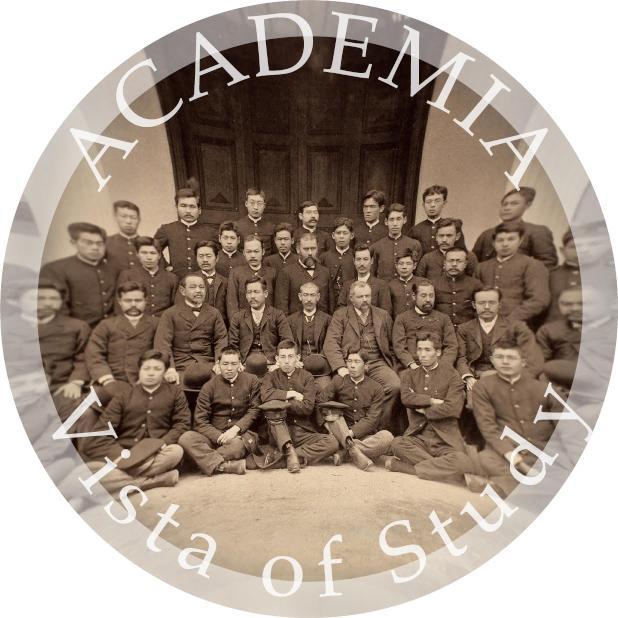Special Feature “Vista of Study - Former Collections of the University of Tokyo Faculty of
Medicine in ACADEMIA”
2023.03.21-2023.04.23
ACADEMIA
In conjunction with the 31st Annual Meeting of the Japanese Association of Medical Sciences which will be held in Tokyo, Intermediatheque will feature ACADEMIA, a permanent exhibition space displaying a number of former collections of the University of Tokyo Faculty of Medicine. This special feature is part of the tenth anniversary celebration of Intermediatheque.
Organizer: The University Museum, the University of Tokyo (UMUT)
Feature Highlights
Desks and seats from the small lecture hall in the main building of the University of Tokyo Faculty of Medicine
Currently, the desks and seats that were once actually used in the small lecture hall of the main building of the University of Tokyo Faculty of Medicine (completed in 1936) have been relocated in ACADEMIA. The main building of the Faculty of Medicine was designed by Uchida Yoshikazu (1885–1972), an architect who led the university reconstruction project after the Great Kanto Earthquake, and still exists on Hongō Campus. The original lecture hall is a single-flow staircase classroom, but ACADEMIA has arranged the desks and seats in a face-to-face configuration for use as an exhibition space and lecture theater. Slots are carved on the thick tabletops for pens and ink jars. The word “大學” (the University) can be seen on the leg of the desks, indicating that they were university equipment. While the buildings and interiors of the Hongō Campus have changed over time, the desks and seats that remain in Intermediatheque are today a historical heritage, telling a story of classrooms where students who aspired to medicine gathered in the early Showa period.
Portraits of the Internal Medicine Auditorium
The walls of ACADEMIA are hung with portraits of professors at the University of Tokyo, with ten of them representing professors of the Faculty of Medicine. Nine of these once hung on the large wall behind the podium in the Internal Medicine Auditorium of the University of Tokyo Hospital. The scene of learning in the Internal Medicine Auditorium must have been that of medical students studying while facing the past professors of internal medicine who paved the way in the history of medicine. The portrait of Miura Kin’nosuke (1864–1950), known for his efforts to establish medical education and internal medicine by the Japanese after a period of learning Western medicine from foreign teachers hired by the government, was painted in 1920 by Kuroda Seiki (1866–1924), a leading Japanese Western-style painter. Although this is one of the most remarkable works in the history of art, no one has been able to see it up close for a long time because it hung at the top of the large wall behind the podium in the Internal Medicine Auditorium. This work, along with other portraits, became part of the collection of the University Museum, the University of Tokyo (UMUT) in 2015, and after dusting off the years of accumulated dust, the painting has been restored and is now available for many people to view as an exhibit that adorns ACADEMIA. Some of the portraits from the Internal Medicine Auditorium are also on permanent display in HOMAGE on the third floor of Intermediatheque.
View the description of the portraits on display at ACADEMIA as a PDF.
Cement statue of a professor of medicine
The cement statue (date unknown, the bronze statue of the same size was created by Naganuma Moriyoshi in 1908) representing Hamada Gentatsu (1854–1915), a professor of Obstetrics and Gynecology at the Imperial University College of Medicine is placed beside the blackboard of ACADEMIA (a graduation photograph is displayed on the wall with the blackboard during this special feature as a special presentation). As World War II raged and supplies became scarce, the government ordered the delivery of metals from all over the country. In 1944, the University of Tokyo was notified that all of its bronze statues were subject to delivery. On December 23 of the same year, the University of Tokyo Faculty of Medicine held a farewell party for the professors’ statues removed from their pedestals to be delivered to make munitions. In a photograph of the farewell party, the bronze statue of Hamada can be seen among the professors’ statues. In fact, here is no record of the statues being delivered from the university, and it seems that the statues remained on campus until the end of the war. On the other hand, several cement statues identical to those of the professors’ bronze statues have been found. Although the details of these cement statues have not been disclosed, it is assumed that cement replicas were made in place of the bronze statues that were to be delivered for the war effort, out of respect for the statues that represented the appearance of their beloved former professors. This cement statue of Hamada may be one of them, although the circumstances of its creation are also unknown. Through this statue, we can see a part of the social phenomenon of the wartime delivery of bronze statues, which the University of Tokyo was forced to deal with without exception beside its academic pursuits.
Graduation Photograph of the Imperial University College of Medicine [special presentation]
During this special feature, in addition to the permanent collection of ACADEMIA, an enlarged replica of a graduation photograph of the Imperial University College of Medicine, taken in 1892, from the Miyake Family Collection of UMUT, formerly a modern medical family, will be on display. This photograph was produced by Ogawa Kazumasa (1860–1929), a photographer who was engaged in many photoengraving and printing works of the University of Tokyo, including a famous photo album Tokyo Imperial University (1900) and graduation albums of the Faculty of Medicine. In this photograph, Baelz (1849–1913) and Scriba (1848–1905), who contributed greatly to the development of modern medicine in Japan as foreign teachers hired by the government during the Meiji period, are found together with the Japanese professors and students.

